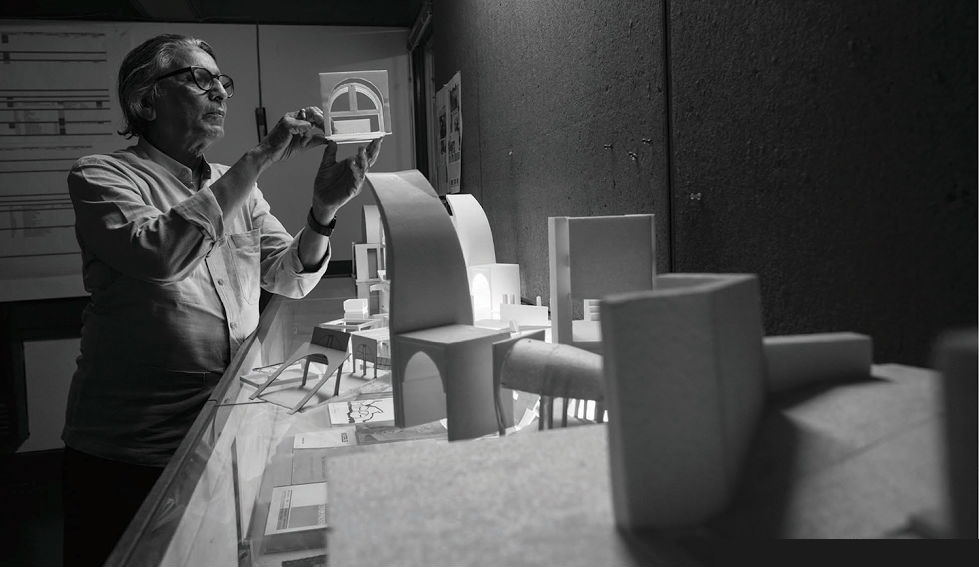Of architecture of personality
| Date :01-Apr-2025 |
BVDoshi at workBy Vijay Phanshikar :“Architecture should be treated asdesigning for aspiration that allows people to become what they have the potentialto be”.- Famous architect B.V. Doshi,on his idea of architecture.DESIGNING for aspiration !Wow !
That is saying a lot in just three words.
Yet, the qualification is as important -- to help “people become what they have the potential to be”.
For the master of classic architecture that B.V. Doshi was, architecture, thus, was creating a design that serves the aspiration of the user and allows him/her to be able to use his/her potential to the fullest.
Upon coming across great architectural marvels across the world, one does realise the power of these words. Each architect, thus, becomes sort of a practitioner of the fine art of reading the aspirational poetry in the intended user’s mind. Like an actor understands the character he plays, the architect, too, delves deep into the mind of the user -- or is expected to do as per the standard. He then weaves the structure around that proposed user or users. When a structure or a building or a utility or a facility achieves such a confluence of
aspiration and design, then it becomes iconic -- and carves in the people’s mind a
permanent place for itself.
There is a spiritual metaphor of this as well -- to be used in the context of making the human potential to flourish to its fullest bloom. That metaphor pertains to the idea of creating or building an eco-system that would have enough encouragement to and scope for blossoming of human virtue to the fullest -- in shape and size and
fragrance (like a flower in full bloom).
Going by this standard, every mother, every father, every teacher is expected to be the architect of the little one in his/her charge. Or, in other words, he/she may treat self as a sculptor who is shaping a
personality in the most fruitful and fulfilling manner -- fulfilling for the sculptor (or
maker) and fulfilling for the little one !
But then comes a moment -- a tipping point -- when one gets jettisoned from the first eco-system and soars into an entirely personalised domain of self. In that zone, one is then expected to create an eco-system that would favour his/her blossoming to the fullest.
Poets have often responded to such blooming that they come across in Nature. They marvel at the Divine’s ability to
provide each entity an eco-system in which fullest evolution is possible. That may not happen in each case, though. Yet, does not every person try to weave a highly
personalised spiritual eco-system in which he/she can evolve fully, to the fullest
potential ?
We may call this a personalised attempt at designing for personal, individual
aspiration -- which everybody does (though with differing extents of success).
One cannot miss the beauty of the process, the beauty of its conception, the beauty of its trauma and travails -- and
triumphs in many cases. For, when a human being is being sculpted or
architectured, the process has its intense beauty, appeal !

